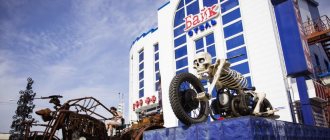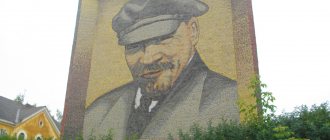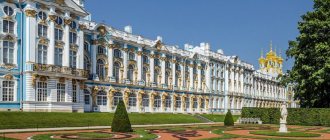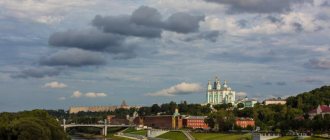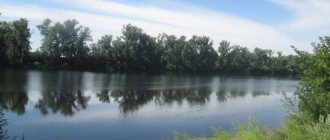Lost elements have been returned to the “Cannon” monument in Kamensk-Uralsky
Kamensk-Uralsky, September 28 – IA Vremya Press. Thanks to a grant from the Sinara charitable foundation, the lost elements have been returned to the Cannon monument in Kamensk-Uralsky - an artillery ramrod (bannik) and an artillery cannonball.
Representatives of the Sinarsky Pipe Plant (SinTZ), part of the Pipe Metallurgical Company (TMK), took part in the ceremony.
The cannon was installed on the banks of the Kamenka River in 1967. It is a monument to the workers of the Kamensk State Iron Foundry, which cast guns that took part in military battles in the 18th-19th centuries. The Sinarsky Pipe Plant took a direct part in the creation of the monument. The electromechanical plant took over the construction work, and the gun was cast at SinTZ.
The author of the monument is Vladimir Permyakov, at that time an artist at SinTZ; the project engineers were the head of the architectural and construction bureau of the radio plant, Alexander Bragin, and the head of the construction sector in the design department of SinTZ, Fedor Gorshkov.
In the 1990s, two elements of the gun were lost - the artillery ramrod and the artillery core. Now the parts have been restored and returned to their rightful place. The city socio-cultural became the winner of the grant competition of the Sinara Charitable Foundation in the “Cultural Heritage” category.
– Thanks to the winning grant from the Sinara Charitable Foundation, we were able to organize the production of elements and carry out installation. The name came from the theme of the project. What is lost must be returned. The exhibition must be complete,” noted Pavel Leich, deputy director of the SCC.
The lost symbol of the city was returned as part of the V city historical and cultural festival “Muses and Guns”. This year it was held in two locations. A rock concert took place at the SCC site. In the old part of the city, near the Kamensky Pond dam, a quest game “Rudoznatsy”, excursions, a cannon yard championship and a rally were held in honor of the return of elements of the city’s symbol to their place.
Representatives of the city administration and enterprises participating in the project, the local history community, and townspeople gathered at the cannon. The Director of Human Resources Management of SinTZ, the representative of the board of the Sinara Charitable Foundation, Sergei Lyakhov, and the head of the Kamensk-Ural urban district, Alexey Gerasimov, addressed the audience with welcoming words. The Sinara Charitable Foundation and the Sinara Pipe Plant were awarded letters of gratitude from the Department of Culture of the Kamensk-Ural Urban District.
– This is the history of our city, which we must preserve and pass on to our descendants so that they remember what contribution the city made to the history of the country. And this contribution is worthy - Kamensk-Uralsky was and remains the stronghold of the state,” emphasized Alexey Gerasimov.
In a solemn atmosphere, the installation of the banner and the core was carried out - each element weighs about 20 kilograms. But first, everyone could take a photo with them as a souvenir.
– The cannon is the main symbol of Kamensk-Uralsky, its historical accuracy has been restored. This became possible thanks to a grant from the Sinara Charitable Foundation. The Foundation has been holding a grant competition for non-profit organizations since 2007. During this time, hundreds of projects received support, including in Kamensk-Uralsky,” said Sergei Lyakhov. – The return of the historical appearance is important both for the city and for the Sinarsky Pipe Plant - the cannon was manufactured at our enterprise more than half a century ago. The implementation of the project is the preservation of the history of the city for future generations of Kamenets.
The Sinara Charitable Foundation, which turned 20 this year, is the sole operator of the charitable activities of TMK enterprises and the Sinara Group. The Foundation implements more than 20 personalized projects and events, uniting thousands of people throughout Russia - grant recipients, partners, experts, volunteers.
Photo: SinTZ press service
Kamensk guns and captured Swedes
July 10 is the Day of Military Glory of Russia - the Day of the victory of the Russian army over the Swedes in the Battle of Poltava, as a result of which the largest number of Swedes were captured.
On August 30 (modern style) 1700, Russia declared war on Sweden, and on September 3, Tsar Peter set out on a campaign to the Swedish fortress of Narva, which became the main target for his army. The Russian army was defeated. 179 of 184 guns were lost.
At this time, two iron foundries were built in the Urals: Kamensky on the river. Kamenka, on the lands of Tobolsk district and Nevyansk on the river. Neive, on the lands of Verkhoturye district. The article will focus only on the Kamensky plant.
Rice. p.p.XVIII century
Back in March 1700, the Tsar’s letter was sent from the Siberian Prikaz: “In those places where... ore was found, it was ordered... larger factories to be established.” And ... as quickly as possible, he will hurry so that first the blast furnace is ready for casting ... and for the sake of experiment and sample, pour out two or three cannons ... and send them along the winter route to Moscow.”
In the next letter dated November 24, 1700, it was ordered: “... at the Kamensky or Verkhoturye iron factories from the best soft iron ... pour out, as soon as possible ... two or three martyrs with good craftsmanship, and send along the winter route to Moscow to the Siberian order, without getting tired."
The Kamensky iron foundry came into operation on October 15, 1701, when the first cast iron came out of the blast furnace. The first three cannons and two mortars were cast in December 1701. From 1702 to 1705 More than 800 guns were cast at the Kamensky plant, of which about 500 were sent to Moscow.
What were these first guns from the Kamensky plant, what did they look like, what size were they? Let's look at the documents. In January 1703, guns cast in 1702 were brought to Moscow from the Kamensky plant. A total of 18 guns, 10 howitzers and 7 mortars.
For example, 3-pound cannons were with dolphins and coats of arms, 2 arshins long, weighing from 18 to 23p. Among them, two cannons cast by A. Kolokolnikov stood out, weighing 28 and 34 points, and 2 arshins and 14 vershoks long. The weight of the 6-pound guns was from 60 to 65 points, the length was 3 arshins 7 vershoks. The “small” mortars weighed from 11 to 15 p., and the “2 pood bomb” mortars weighed from 46 to 47 p. Howitzers, half an arshin long, weighed different: from 4 to 13 p.
With the first water caravan on April 27, 1703, a large amount of military supplies was sent on 40 planks. A detailed description of the guns is in the document: “Painting for cannons and mortars and howitzers, which in the current year of March and April 1703, on different dates, were sent from the Trinity town from the Kamensky iron factories to the Verkhoturye district, to Utkinskaya in Chusovaya Sloboda to the pier on Moscow vacation.” .
In total, 366 guns, 12 mortars and 15 howitzers were sent to the pier. But Semyon Rezanov, the leader of the caravan, “by disassembly” took 323 guns, 12 mortars and 14 howitzers “with him to Moscow.”
All the cannons, mortars and howitzers had numbers, weight and year engraved on them, although many of the cannons had “bad notches,” and “the clerk, Christopher Levenfet, did not send Semyon the painting for his hand.” Rezanov, or rather clerk Trifon Semenov, had to rewrite “those guns and mortars and howitzers floating on the road to Moscow.” Semyon himself “doesn’t know how to read and write.”
As a result, out of 323 guns, 216 were 3-pounders, 60 guns were 6-pounders, 47 were 8-pounders. Some were with dolphins, others were without, they had different lengths and different weights.
1. 3-pounder guns:
117 cannons with dolphins, 2 arshins long without 2 vershoks, weighing from 15 to 20 p. 27 lbs.
37 cannons with dolphins, 2 arshins long, weighing from 16 to 27 p. 35 lbs.
16 cannons with dolphins, 2 arshins long with two inches, weighing from 20 to 27 p.
46 cannons without dolphins, 1.5 arshins long, weighing from 24 to 31 p.
S.U. Remezov. Drawing of a 3-piece cannon
S.U. Remezov. Drawing 3-ph. dolphin guns
2. There were 60 six-pound guns, all without dolphins:
32 of them were 3 arshins long, weighing from 22 to 66 p.
28 guns, 3.5 arshins long, their weight was from 57 to 67 p. 5f.
3. 47 guns were 8-pounders, without dolphins. Their length is 3 arshins, weight from 50 to 66 p.
4. 12 mortars of different weights: from 11 to 55 p.
5. 14 howitzers weighing from 13 to 14 p.
Several Kamensk cannons with the mark of 1703 are currently located in Yekaterinburg, Orenburg and in its suburb called Berdy.
Kamenskaya 3 lb. cannon 1703, weight 24 p. Ekaterinburg
Of the 323 guns brought to Moscow, the following exploded during testing:
80 three-pound guns, 6 six-pounders and 1 eight-pounder. In addition, dolphins were torn off 16 cannons.
The remaining 220 Kamensk cannons were presumably dispersed among the troops and probably took part in the war with the Swedes. It is difficult to say what contribution Kamensky cannons made to the victorious battles over the Swedes.
But the fact that the Swedes ended up at the Kamensky plant as a result of captivity is a fact!
This is confirmed by the document “Gazette of the Kamensky plant and the settlements assigned to it” for 1718. “Yes, one hundred and forty-two people were sent from Tobolsk to work at the Kamensk factories.”
The first captured Swedes arrived at the Kamensky plant around 1712 during the reign of commandant Ivan Amleshev.
The Swedes were used in auxiliary work. They cut down forests and prepared firewood, burned coal, broke and transported ore, limestone and forge stone, and drove tar. Some worked with local factory craftsmen “at the welding process”, others in the forge: “repairing gear, forging supplies.”
“And for those works described above, the sovereign’s monetary feed salary was given according to the specified statute of eleven altyns, four money per month per person.” As can be seen from the document, the payment to the captured Swede did not depend on the difference in work; they paid the same for any work - 11 altyn 4 money (35 kopecks) per month. A month's salary was also given to the sick who were “in sick.”
What could you buy with this money at that time? Let's give an example: 100 eggs cost 17 kopecks, a pound of wheat flour - 12, a pound of salt - 15. A pig - 3 kopecks, a pair of geese - 3-6 kopecks, a pound of meat from 3 to 4 kopecks, a pound of tobacco - 50 kopecks, two ports ( men's pants) - 12-15 kopecks, a bucket of wine - 2 rubles, a bucket of beer - 6 kopecks.
The Swedes did not like local beer, so they made their own and sold it in nearby villages. It is known that the Apolov family was engaged in brewing and sales. “In 1718, money was taken from the farmer of the Swedish captive Von Apolova, the widow, for the purchase of beer. What she sold for farming in 1715 at the Kamensky factories and in the forts present in Kataysky and Kolchedansky, in Kamyshevskaya and Bagaryatskaya settlements in addition to the previous dacha, twenty-six rubles, seventeen altyns.”
In addition to the monetary salary, the captured Swedes were given rye flour at the rate of one and a half four rubles per month per person. Four - 26.2 liters. This flour was collected from the peasants of the surrounding settlements: Bagaryatskaya, Kamyshevskaya and Kalinovskaya, as well as from the Kolchedansky fort.
“Yes, they gave five Swedish prisoners a ruble each for fur coats. Total five rubles. Yes, by order of the commandant of Ko(n)stantin Fedorov, son Ushakov, the Kshvandron Dragoon was given the sovereign's salary to one person for eight months, fifty per month. Total four rubles. Which dragoon lived at the factory as an orderly under him, Ushakov.” The orderly was paid more per month than those who were employed in production! He gets 50 kopecks, they get 35 kopecks a month. It is unknown who exactly was given the money for the fur coats, as well as whether these “five rubles” were deducted from their salaries.
Swedish Reitar
Swedish dragoons
In 1719, out of 142 people, only 30 Swedes remained in the Kamensky plant, some of whom were family. This was recorded by the census. In the list below, names and surnames may be distorted due to the scribe's sloppy handwriting.
1. Court of the sovereign. Swedish captive warrant officer Gudmunun Alberh, 36 years old, single.
And that yard was given by the commandant Ivan Amleshev to the church for their Swedish service. A genuine helmet has a Swedish hand.
2. Courtyard of a Swedish prisoner. Pastor Irin Norberg, 35 years old, single.
The commandant Semyon Durnovo built the yard for him, but whether the commandant built that yard for him with his own money, the pastor doesn’t know.
3. Courtyard of a Swedish prisoner. Sergeant Antz Indritz, 35 years old, single.
The yard was bought from dekhtan foreman Ivan Suvorov. He gave the prices four rubles, twenty-five altyns. But when I bought that yard at the Kamensky plant, I didn’t write it down in the order or in the book.
This dekhtan master lives in the Kolchedan prison in the village of Sungulskaya with his yard.
4. Court of the sovereign. Capt. Captain Andrey Shvandyr, 37 years old.
5. Okulin’s wife Vasilyeva, daughter, 20 years old.
6. Karl, 6 years old
7. Kozma, 4 years old
8. Anna, 1 year.
The court was given to him according to a decree sent from Tobolsk and signed by the former governor, Prince Matvey Petrovich Gagarin, in 1715 under commandant Fyodor Kozinsky.
9. Courtyard of a Swedish prisoner. Dragoon Mikhailo Bukhvalt, 35 years old, single.
I bought the yard from the peasant Gavrila Pupyshev for 2 rubles. But when I bought that yard, I didn’t write it down in the order or in the book. And this peasant lives at the Kamensky plant in a settlement in his other yard.
10. Courtyard of Swedish prisoners. Sergeant Martyn Martynov, 56 years old.
11. Davyd Depr, 43 years old, single.
The yard was bought from Molotov apprentice Mikhail Pagin for 2 rubles. They did not write down the order or the book and did not pay any fees. And the apprentice lives in his other yard.
12. Courtyard of Swedish prisoners. Reitar Lars Nyrin, 40 years old, single.
13. Corporal Lars Grensche, 50 years old, single.
The yard was bought from Andrei Andreev Ozornin, a nobleman, for 23 altyn, 2 money. The order was not written down in the book, and no duties were paid. And the boby lives in his other yard.
14. Courtyard of a Swedish prisoner. Dragun Ik Avramov, 40 years old.
15. Wife Anna Yuryeva, daughter, 40 years old.
16. Daughter Marya, 8 years old
The yard was bought from the Kolchedansky prison by the boby Ivan Kuritsyn for 4 rubles. I didn’t write it down in the book and didn’t pay any fees. And the bob lives in the village of Krasnogorskaya in his other yard.
17. Courtyard of a Swedish prisoner. Reitar Sifran Corp., 50 years old.
18. Wife Sofya Zakharova daughter, 21 years old.
I bought the yard from Bobyl widow Anna Fedorova for 2 rubles 30 altyns and 2 money. I didn’t write it down in the book and didn’t pay any fees. And Anna lives in her other yard.
19. Courtyard of a Swedish prisoner. Sergeant Kr...n Sheyfelt, 55 years old.
20. Wife Katerina Ivanova, daughter, 55 years old.
He bought the yard from the peasant Evdokim Storozhev for 1 ruble. I didn’t even write it down in the order. And the peasant died in the past in 1718, leaving no children.
21. Courtyard of a Swedish prisoner. Reitar Olov Backman, 40 years old, single.
I bought the yard from the peasant Karp Kharitonov for 1 ruble. I didn’t write it down in the book, I didn’t pay any fees. And the peasant lives in his other yard.
22. Courtyard of Swedish prisoners. Sergeant Yugan Redtov, 50 years old, single.
23. Sergeant Yugan Indrik Karpov, 40 years old.
24. Dragoon Petr Irsh, 36 years old.
25. Yugan Tsimeh, 37 years old.
The yard was bought from the peasant Peter Eremeev for 3 rubles 10 altyns. They didn’t write it down in the book and didn’t pay any fees. And the peasant lives in his other yard at the Kamensky plant in the settlement.
26. Courtyard of Swedish prisoners. Corporal Yakov Shuman, 50 years old, single.
27. Faltym Turlis, 40 years old.
The yard was built on empty land by itself on the orders of commandant Semyon Durnovo.
28. Courtyard of a Swedish prisoner. Police officer Bemzis Berlev, 38 years old.
29. Wife Anna Marya Krysanova, daughter, 20 years old.
The yard was built on open land by order of Commandant Konstantin Ushakov.
30. Courtyard of Swedish prisoners. Lieutenant Ensign Christian Pyachan, 40 years old, single.
31. Dragoon (G) Antz (G) Audil, 60 years old, single.
The yard was bought from the peasant Semyon Bogomazov for 4 rubles. They didn’t write it down in the book, they didn’t pay the fees. And this bob was exported to Suzdal in 1716.
32. Courtyard of Swedish prisoners. Dragoon Mikhailo Buni, 50 years old, single.
33. Dragoon Yugan Votnek, 50 years old, single.
The yard was bought from the peasant Semyon Chanchikov for 1 ruble. The order was not written down in the book, and no duties were paid. And the bob lives at the Kamensky plant in his other yard.
34. Courtyard of Swedish prisoners. Soldier Yugan Flieger, 40 years old, single.
35. Soldier Jan Wentz, 60 years old, single.
The yard was bought from the peasant Andrei Vasiliev for 2 rubles 10 altyns. They didn’t write it down in the order and didn’t pay any fees. And the peasant lives in the village of Karpova in the farmstead of the peasant Ivan Bychkov.
36. Courtyard of Swedish prisoners. Reitar Banki Yunson, 50 years old, single.
37. Pinor Oplent, 55 years old, single.
38. Andrey Sentsov, 38 years old, single.
The yard was bought from the peasant Eremey Petrov for 3 rubles. The order was not written down in the book, and the duties were not paid. And the peasant lives in the village of Karpova in his other yard.
39. Court of the sovereign. Swedish captive Feltwebel Magnus Apolov, 27 years old, single.
40. His mother is widow Anna Bisvankeva, 70 years old.
41. He has a Bobyl son, Kozma Fedorov Privalov, 16 years old, single, living in a rental for work from Tagil, Verkhoturye district.
The court was given to him by decree sent from Tobolsk and signed by Prince Matvey Petrovich Gagarin under commandant Fyodor Kozinsky.
Are there any Swedes with family left in Kamensk? It is unknown, but there was definitely one son from a captured Swede. Recently, the Kamensk-Ural Museum of Local Lore received a request from M.V. Sergeeva, whose ancestor (Shvedov Ivan Yakovlevich) was the son of a captured Swede who lived in the Kamensky plant. It turned out that Ivan was presumably the son of Jacob Schumann, a corporal who was listed as single. (See above). In 1746, Ivan was recruited from Kamenskaya Sloboda and assigned to the construction of the Utkinsky plant under construction. He had a wife and children. Today this is the only descendant of captured Swedes known to us.
Source: Website of the Kamensk-Ural Museum of Local Lore
KAMENSK-URALSKY
Two months until our city celebrates the half-century anniversary of the main Kamensk attraction - the “Cannon” monument. How Kamensk-Uralsky will celebrate the memorable October date was discussed during the next meeting of the organizing committee in the city administration.
All events planned by the organizers on the occasion of the 50th anniversary of the installation of the monument will be held as part of the historical and cultural festival “Muses and Cannons”. In order for the holiday to be truly memorable for the townspeople and its guests, to be held clearly and smoothly, those responsible for its implementation will have to work hard, emphasized Denis Mironov, the deputy head of the city for social policy. The preparation involves specialists from the city and Sinarsky district administrations, the Youth Policy Center, departments of culture, education, UGS, employees of the local history museum and the SCC.
The management of the Kamensk-Ural Electromechanical Plant is also ready to provide all possible assistance. After all, it was here, on the territory of Uralelectromash CJSC, that the Kamensky State Iron Foundry was located, where the famous guns of the past were cast, which thundered in many military battles since the time of Peter I. By the way, Electromash workers have experience in making souvenir mini-guns that can be presented guests of the city. As an element of industrial tourism, an information stand about the historical past of the plant will be installed at the enterprise site.
Museum workers are developing and organizing excursions around the territory of the former Kamensky plant. An hour and a half excursion into history will consist of two parts, starting from Pushka, capturing the Kamenskaya dam and ending on the territory,” emphasized Yulia Partina, deputy director of the city local history museum for excursion services for the population.
In addition, museum workers are preparing materials about the “Cannon” monument and its authors, about the history of cannon production at the Kamensky plant, a quiz on the history of military production at the Kamensky plant, and this quiz will be held closer to the memorable date. During the celebrations, lessons and excursions “Kamensk guns - participants in the battles of the 18th-19th centuries” are organized as part of the “Live Lessons” program and a virtual exhibition “Kamensk Chronicle” is organized within the walls of the local history museum.
Various events - from exhibitions dedicated to the sculptor - the author of the "Cannon" monument Vladimir Permyakov, as well as the history of Kamensky to a festive concert of the song and dance ensemble of the Central Military District - are planned to be organized at the SCC venues. The city’s education department will also join in the implementation of the project: the younger generation should know the history of their hometown and its symbols. Local history conference “Styazhkin Readings”, drawing competitions, including computer graphics, excursions to the monument, classes in educational institutions on the topic “My City. The historical monument “Cannon” is included in the cultural and educational program of the holiday.
The anniversary celebration will end with a flash mob, concert program and photo session for everyone. It was decided to equip the monument itself with additional lighting, tidy up the granite pedestal, install lamps, benches and urns in a single compositional style. At the initiative of the city's cultural department, an information booklet will be published and a short film will be made about the “Cannon” monument.
